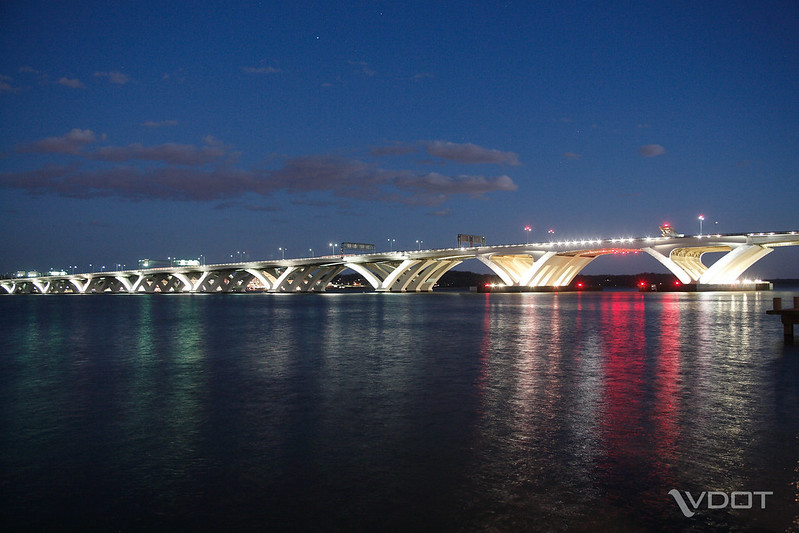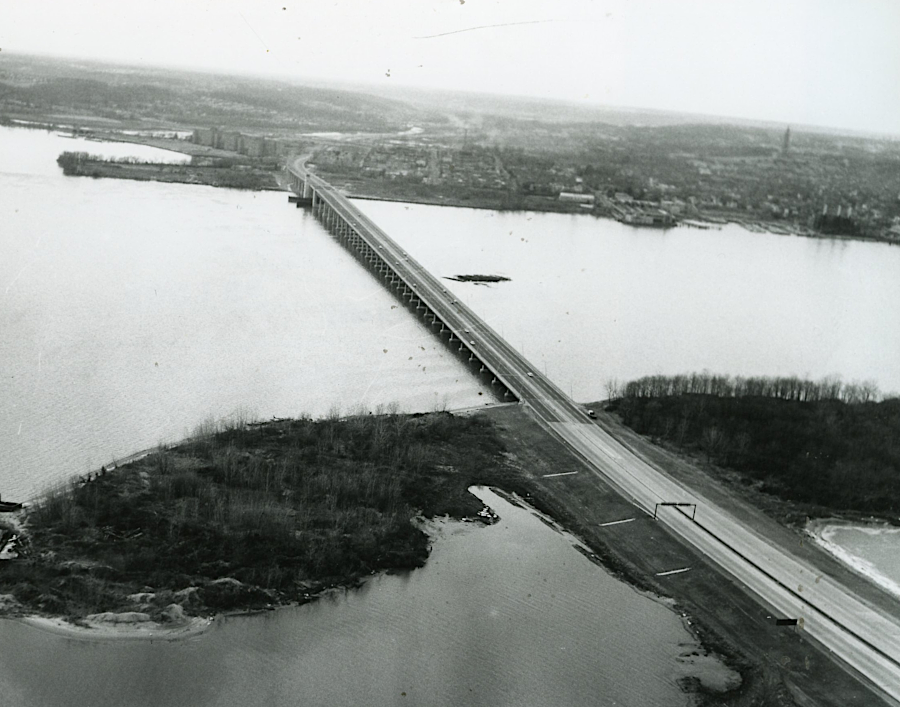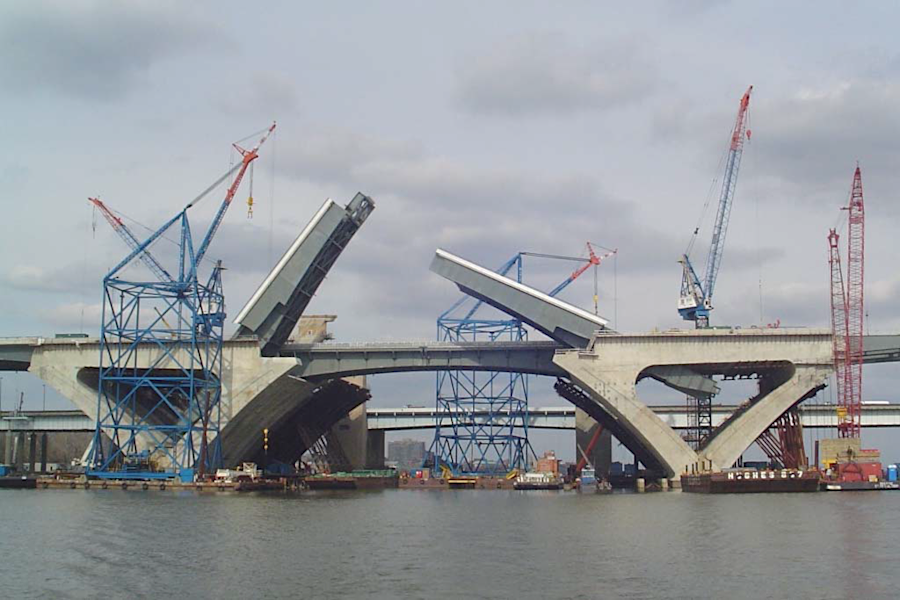
current Woodrow Wilson Bridge (2025)
Source: Virginia Department of Transportation, Woodrow Wilson Bridge

current Woodrow Wilson Bridge (2025)
Source: Virginia Department of Transportation, Woodrow Wilson Bridge
The Woodrow Wilson Bridge, constructed in 1961, carried I-495 (Capital Beltway) across the Potomac River from Jones Point in Alexandria. The US Congress authorized construction of a six-lane bridge in 1954, and it was originally called the Jones Point Bridge. In commemoration of President Woodrow Wilson's 100th birthday in 1956, it was renamed the Woodrow Wilson Memorial Bridge.1

the Woodrow Wilson Bridge replacement affected 7.5 miles of the Capital Beltway, including construction of new interchanges
Source: Virginia Department of Transportation, Woodrow Wilson Bridge Project (July 17, 2007)
Virginia, Maryland and the District of Columbia shared maintenance responsibility for the bridge after it opened in 1961, but the Federal Highway Administration (FHWA) owned it. Due to the language in the bill which authorized the bridge in 1954, the Woodrow Wilson Bridge was the only bridge in the interstate highway system owned by the Federal government. The three jurisdictions were unwilling to accept ownership until the US Congress approved funding for a replacement structure, because the existing structure was expected to last only 10 more years. It was also the only segment of the Capital Beltway with only six lanes, so a larger replacement was clearly required.2

the original 1961 bridge had only six lanes, three in each direction
Source: District of Columbia Department of Transportation, Woodrow Wilson Bridge (July 17, 2007)
The three jurisdictions ratified the Woodrow Wilson Bridge and Tunnel Compact in 1996. Only 700 feet of the bridge crossed through the District of Columbia, though that included the wheelhouse from which a District employee operated the draw spans when tall ships needed to pass. Maryland and Virginia agreed to assume ownership of the new bridge, which was built with 12 lanes.
The project ended up costing $2.357 billion, $86 million less than a 2001 budget estimate. When completed in 2013, the bridge had been replaced, a new Telegraph Road interchange had been constructed, and the THRU and LOCAL lanes west from the bridge had been extended.3

all traffic was switched to the first half of the new Woodrow Wilson Bridge in 2006, allowing demolition of the 1961 structure (on far left)
Source: Virginia Department of Transportation, Woodrow Wilson Bridge Project (July 17, 2007)
Alexandria had sued to limit the bridge to 10 lanes of traffic. The bridge was built with space for 12 lanes. Some of the space dedicated for future High Occupancy Vehicle (HOV), transit, or rail was used for concrete barriers that separated regular and HOV traffic.
In 2025, the Virginia Department of Transportation proposed in the I-495 Southside Express Lanes Study to add 11 miles of toll lanes to the Capital Beltway between I--95 and Maryland. That was the last section of I-495 in Virginia without express lanes.
Two additional lanes would be added in each direction. That would reduce traffic congestion and speed up the flow of buses. Vehicles with three or more passengers could avoid the toll.

the 2025 proposal to add toll lanes included a commitment to convert one lane in each direction to Metrorail, if needed in the future
Source: Virginia Department of Transportation, 495 Southside Express Lanes Study
Elected officials in both Alexandria and Fairfax County prioritized preserving the option of adding Metrorail in the future. The Virginia Department of Transportation agreed to make that a legally-enforceable part of the project. Opponents continued to object to any incentives that would increase car/truck traffic on local highways leading to the bridge.
In Maryland, Prince Georges County officials were strong advocates for Metrorail - though extending the Blue Line to National Harbor would cost $35 billion. Prince Georges County anticipated that Metrorail across the Woodrow Wilson Bridge would increase travel from Virginia into their county and enhance economic development, while additional vehicle lanes would increase the travel of local residents to work and shop in Virginia.
The chair of the Prince George's County Council said:4
A supporter of the toll lanes on the bridge noted that they were:5

pedestals for new spans, downstream from 1961 Woodrow Wilson Bridge
Source: Virginia Department of Transportation, Woodrow Wilson Bridge Project (July 17, 2007)
Source: GTX Media, Woodrow Wilson Memorial Bridge Raising

one of two bascule spans of new Woodrow Wilson Bridge, in open position, on February 8, 2006
Source: Virginia Department of Transportation, Woodrow Wilson Bridge Project (July 17, 2007)

demolition of Hunting Tower (February, 2003) to allow widening of the Virginia approach
Source: Virginia Department of Transportation, Woodrow Wilson Bridge Project (July 17, 2007)